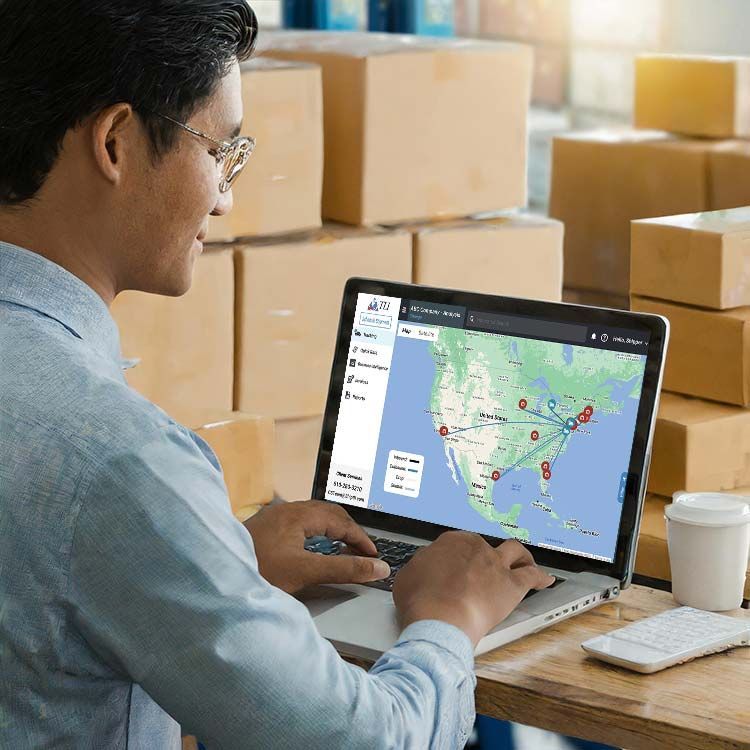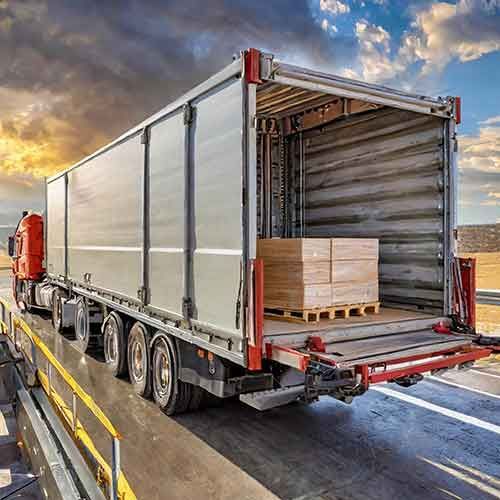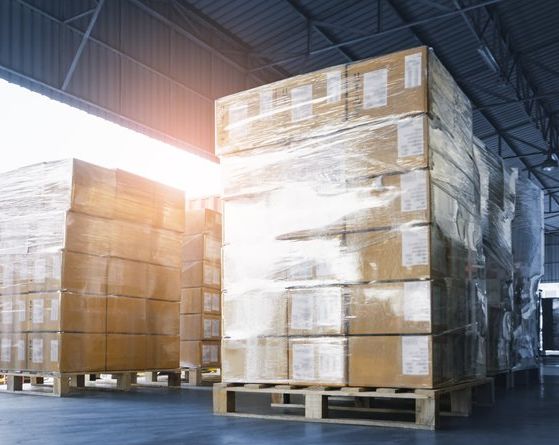Difference Between Parcel and LTL
What Is the Difference Between LTL and Small Parcel?
Small parcel shipping usually involves sending individual packages weighing less than 150 pounds, manageable by a single person.
Less than Truckload (LTL) shipping pertains to transporting larger or multiple items that don't fill a truckload but weigh between 150 and 15,000 pounds.

Small Parcel vs LTL
The definition of small parcel shipments varies from carrier to carrier but it generally refers to the movement of packages that weigh less than 70 pounds, while the actual standard weight limit is 150 pounds. LTL shipping refers to the transportation of goods that don't require a full truckload. Typically, LTL shipments are larger than small parcel shipments, weighing more than 100lbs to generally 15,000 pounds. If a shipment is routed in the LTL environment that weighs less than 100lbs, the Calculated per Hundredweight (CWT) kicks in and the shipment is rated at 100lbs minimum.
Pricing differences between parcel & LTL
A significant difference between the two is how parcel is priced differently from LTL shipments.
Small parcel shipping rates are determined by factors such as:
- Weight
- Dimensions
- Destination
- Shipping speed
For LTL shipments, pricing also considers weight and distance, but another factor, freight class, is included. Freight class is established by the National Motor Freight Traffic Association (NMFTA) and reflects shipment details like:
- Shipment Density
- Cargo liability,
- Handling requirements
- Stow-ability
Your freight class influences your shipping cost - generally, easier-to-move, dense shipments incur lower costs. There are however many exceptions, for example granite countertops are very dense however they have high cargo liability and are not easy to move resulting in a higher freight class.
Freight class is crucial; without it, you can't obtain an accurate rate quote or a bill of lading, which are vital for LTL shipping. TLI offers shippers a freight class lookup took that could be beneficial for your supply chain.
Speaking of the bill of lading (BOL), it's a document detailing cargo in a shipment, including type, quantity, weight, and dimensions. It also identifies the shipper, carrier, and consignee (recipient). The BOL serves as both a shipping label and receipt, aids in charge calculations, and acts as a legal document for resolving disputes or claims during transit, even serving as evidence in court if needed.

Tracking differences between LTL & small parcel
Standard small parcel shipment entails moving a package from one hub to another until it reaches its destination. At each checkpoint, the shipping label is scanned, updating the shipment status in the online tracking portal, making tracking small parcels straightforward.
Tracking LTL shipments is typically straightforward, as freight passes through LTL terminals during transit. At each terminal visit, trailer contents are scanned and updated. Additionally, carriers are integrated with TLI, providing API updates that are reflected in the TMS system. Therefore, utilizing the TMS system allows for tracking of both parcel and LTL shipments.

Small Parcel Shipping vs. LTL Shipping
Consider the scenarios below to understand the difference between small parcel and LTL shipping:
Small Parcel Shipping Example:
Imagine a cosmetics company that specializes in selling small, lightweight products. For them, small parcel shipping is the perfect solution as it allows them to efficiently ship their products directly to customers or retail stores.
LTL Shipping Example:
Alternatively, picture a furniture manufacturer that needs to transport multiple large units to various retail locations or customers. While their shipments may not fill an entire truck, they still require the space and capacity provided by LTL shipping to meet their transportation needs.
Parcel and LTL Shipping Example:
Additionally, an industrial production company may utilize both small parcel and LTL shipping methods. They might use LTL for transporting freight and raw materials, while relying on small parcel shipping for sending smaller parts and samples.
Additional Differences between LTL & Parcel
Parcel services typically offer doorstep delivery regardless of the location type, which isn't the case with LTL shipping. LTL carriers require precise pickup and delivery instructions, without delivering directly to the door or entering premises. However, optional add-on services are available for an extra fee.
Liftgates
Accessorials like liftgate services are essential for locations lacking loading equipment. Residential areas necessitate special considerations due to street navigation and liftgate requirements. Inside delivery and pickup services are additional and must be requested separately. Limited access locations have specific instructions for drivers, including operating hours or coordination with multiple parties. Understanding location classifications ensures smooth shipping and avoids unexpected charges.

Signatures
With standard parcel service, packages are typically delivered without requiring any paperwork signatures unless specified. However, when using an LTL freight carrier, someone must be present at both pickup and delivery locations to authorize the procedures. Essential documents include the Bill of Lading (BOL) and Proof of Delivery (POD). The BOL contains shipping cost and transport details for all parties involved, while the POD serves as a receipt confirming delivery. An authorized individual provides the BOL at pickup, and the POD requires an authorized signature upon delivery after inspecting for damages.

Knowing the differences between LTL Freight and Parcel Service
The key contrast between an LTL freight carrier and a parcel service lies in accessing discounted shipping rates. By teaming up with a third-party logistics company (3PL) such as Translogistics Inc (TLI), you gain access to discounted rates and can arrange your shipments with top LTL freight carriers and parcel carriers. Additionally, we offer the convenience of comparing rates for both parcel and LTL shipments side by side!
TLI Insights
Get the latest logistics insights and tips from Translogistics’ award-winning team. Stay ahead in transportation planning.
Questions? Email us at marketing@tli.email



